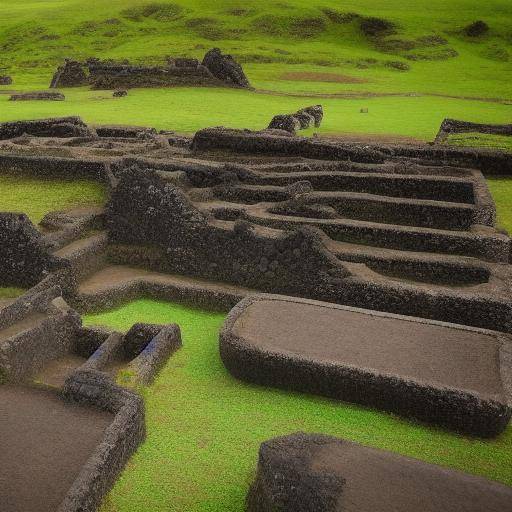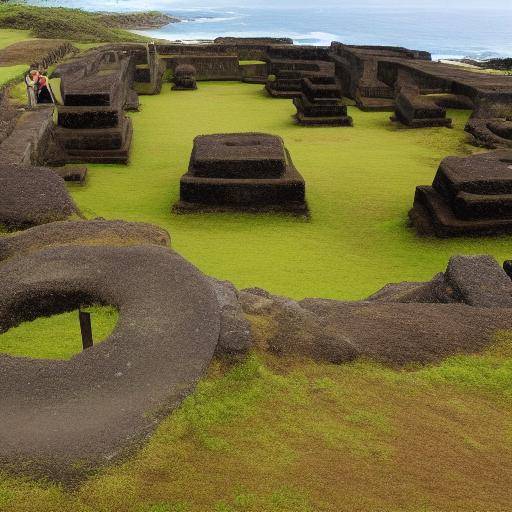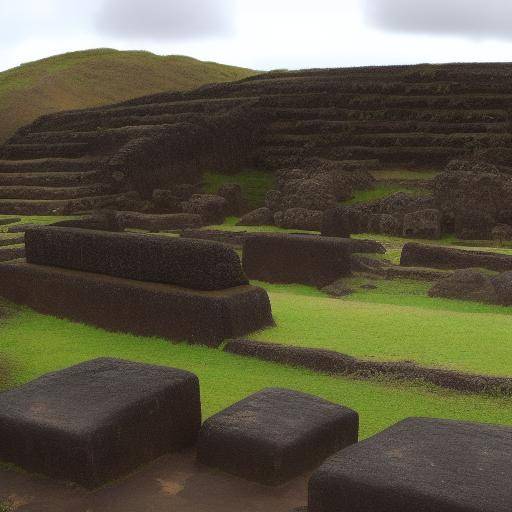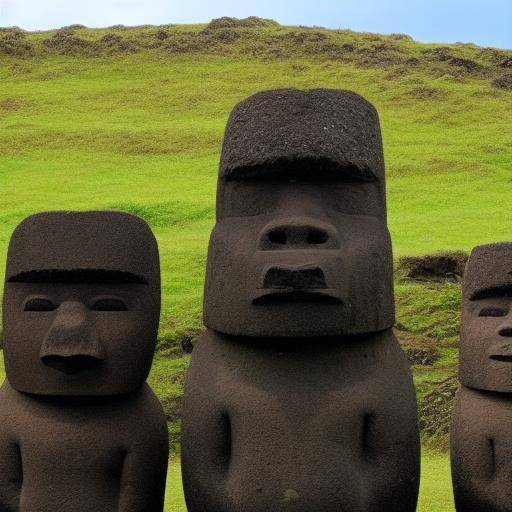
Easter Island, known for its huge stone statues called mois and the fascinating Rapa Nui culture, is a destination that arouses curiosities and emotions. Located in the middle of the Pacific Ocean and being part of Chile, the island is a true historical and natural treasure. In this complete guide, you will know in detail the history, mysteries, and the unique beauty of Easter Island, exploring its moans and immersed in the rich Rapa Nui culture.
Introduction
Easter Island, also known as Rapa Nui in the native language, is a small island territory located in the Pacific Ocean. With its white sandy beaches, crystal clear waters and landscapes dotted with imposing mois, this remote island captivates travelers from around the world. In this guide, you will immerse yourself in its mysteries, learn about the fascinating Rapa Nui culture and discover why Easter Island is an impermissible destination.
History and Background
The history of Easter Island is as intriguing as its mysterious mois. The first inhabitants came to this remote island more than a thousand years ago, bringing with it a rich cultural tradition and a deep bond with the land and the sea. Throughout the centuries, the Rapa Nui civilization achieved great achievements in architecture, sculpture and navigation, as evidenced by the colossal mois that continue to amaze the contemporary world.
Over the years, the island has experienced a series of transformations, from the splendour of its ancestral culture to the arrival of European explorers and subsequently its annexation to Chile in 1888. This rich history has left an imprint on Easter Island, reflected in its traditions, language and, of course, in its iconic mois.
Detailed Analysis
Easter Island is an emblematic destination that perfectly combines natural beauty with an incomparable cultural legacy. The Mois, with their mysterious features and their imposing presence, are the undisputed symbol of this island. However, behind these giants of stone is hidden a complex embedded in beliefs, traditions and meanings that have endured over the centuries.
In addition, the Rapa Nui culture presents an extraordinary wealth, expressed through its art, music and dance. The "Haka Pei" ceremony, where the courageous participants slide down on banana trunks, provides a living sample of the island's impressive cultural heritage.
Comprehensive review
As you explore Easter Island and marvel at its moans, it is important to understand the complex relationship between cultural heritage and environmental preservation. Local authorities and the Rapa Nui community have worked hard to ensure the conservation of these historic treasures, promoting sustainable tourism and the protection of the island's unique ecosystem.
Comparative analysis
By comparing Easter Island to other tourist destinations, it soon becomes clear that its uniqueness lies in the confluence of history, nature and culture. While other places can offer beautiful beaches or ancient monuments, Easter Island offers an experience that transcends the conventional, plunging its visitors into a world of mystery and discovery.
Practical Tips and Useful Tips
When planning your visit to Easter Island, it is advisable to take the time to explore not only the most popular sites, such as the Rano Raraku volcano, the Mois quarry and the Anakena beach, but also to interact with the local community. Participating in cultural events, tasting the exquisite Rapa Nui gastronomy and learning about ancestral traditions will give you an enriching and authentic experience.
Industry Perspectives and Expert Reviews
Archaeology and anthropology experts agree that Easter Island has an invaluable heritage that deserves to be preserved for future generations. The impact of controlled tourism, in harmony with conservation practices, is essential to guarantee the perpetuity of the impressive Rapa Nui culture and its unique monuments in the world.
Case Studies and Real Life Applications
Numerous research projects have revealed unknown aspects of Rapa Nui culture and the construction of the Mois, shedding light on the interconnection of society and the environment. These findings have broadened our understanding of the island, reinforcing the importance of continuing to study and protect this exceptional legacy.
Future Trends and Predictions
As the world evolves, Easter Island faces several challenges, from climate change to the balance between tourism development and cultural preservation. However, the resilience of the Rapa Nui community and the growing global interest in the conservation of cultural heritage offer hope for a sustainable and prosperous future.
Conclusion
The Easter Island, with its mysterious mois and its unique cultural heritage, represents a separate world that awakens curiosity and admiration. The combination of beautiful landscapes, ancient history and a welcoming community make this destination a truly special place. By exploring Easter Island, you will embark on an unforgettable journey that will expand your horizons and connect you to the very essence of this magical Pacific island.
FAQ
What is the best time to visit Easter Island?
The ideal time to visit Easter Island is during the spring and summer season, from October to March, when the days are longer and the weather conditions favor outdoor exploration.
What is the cultural importance of Mois for the Rapa Nui community?
Mois are more than simple stone statues; they are symbols of power, venerated ancestors and spiritual guardians for the Rapa Nui community. Their preservation and respect are fundamental to the continuity of the Rapa Nui culture.
What is the meaning behind Rapa Nui's ancestral dance?
Rapa Nui dance, besides being an artistic expression, is a means of transmitting and preserving the history, beliefs and traditions of the community. Each movement and gesture has a profound meaning that connects dancers with their cultural heritage.
Can you interact with the local community during the visit to Easter Island?
Yes, the inhabitants of Easter Island offer the opportunity to participate in authentic cultural experiences, such as craft workshops, traditional ceremonies and folk events, which provide a unique vision of life on the island.
What is the current approach to the conservation of Easter Island?
The conservation of Easter Island focuses on the balance between sustainable development and the protection of cultural and natural heritage. The measures include responsible tourism management, preservation of archaeological sites and promotion of eco-friendly practices.
What are the restrictions on visiting archaeological sites on Easter Island?
To protect the integrity of archaeological sites, measures have been implemented that limit direct access to certain areas and regulate tourist activities. It is essential to respect these restrictions and follow the established guidelines to ensure the long-term preservation of these historical treasures.
With this detailed guide on Easter Island, Mois and Rapa Nui culture, you are ready to immerse yourself in a world of historical and natural wonders. From the majesty of the Mois to the warmth of the Rapa Nui community, this destination will captivate you with its uniqueness and provide you with an experience that will last in your memories forever.
Get ready to discover the magic of Easter Island and immerse yourself in an unforgettable journey!



